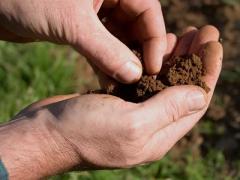Soil Toxicity Testing

Soil Toxicity Testing
The toxicity of contaminated soils has become a major focus in ecological risk assessment and bioaccumulation. Soil toxicity testing can be used to set generic or site-specific soil quality guidelines and for guiding on-site contamination mapping and remediation.
The synergistic, antagonistic, and additive effects of chemical, physical, and biological soil components can be directly measured by exposure of organisms under conditions that closely resemble natural conditions.
New England Bioassay can perform the following soil toxicity tests:
EPA 600/R-99/064 Test Method 100.3 Lumbriculus variegatus (blackworm)
ASTM E1676 Standard Guide for Conducting Soil Toxicity Testing with Eisenia fetida (earthworm)
The synergistic, antagonistic, and additive effects of chemical, physical, and biological soil components can be directly measured by exposure of organisms under conditions that closely resemble natural conditions.
New England Bioassay can perform the following soil toxicity tests:
EPA 600/R-99/064 Test Method 100.3 Lumbriculus variegatus (blackworm)
ASTM E1676 Standard Guide for Conducting Soil Toxicity Testing with Eisenia fetida (earthworm)
